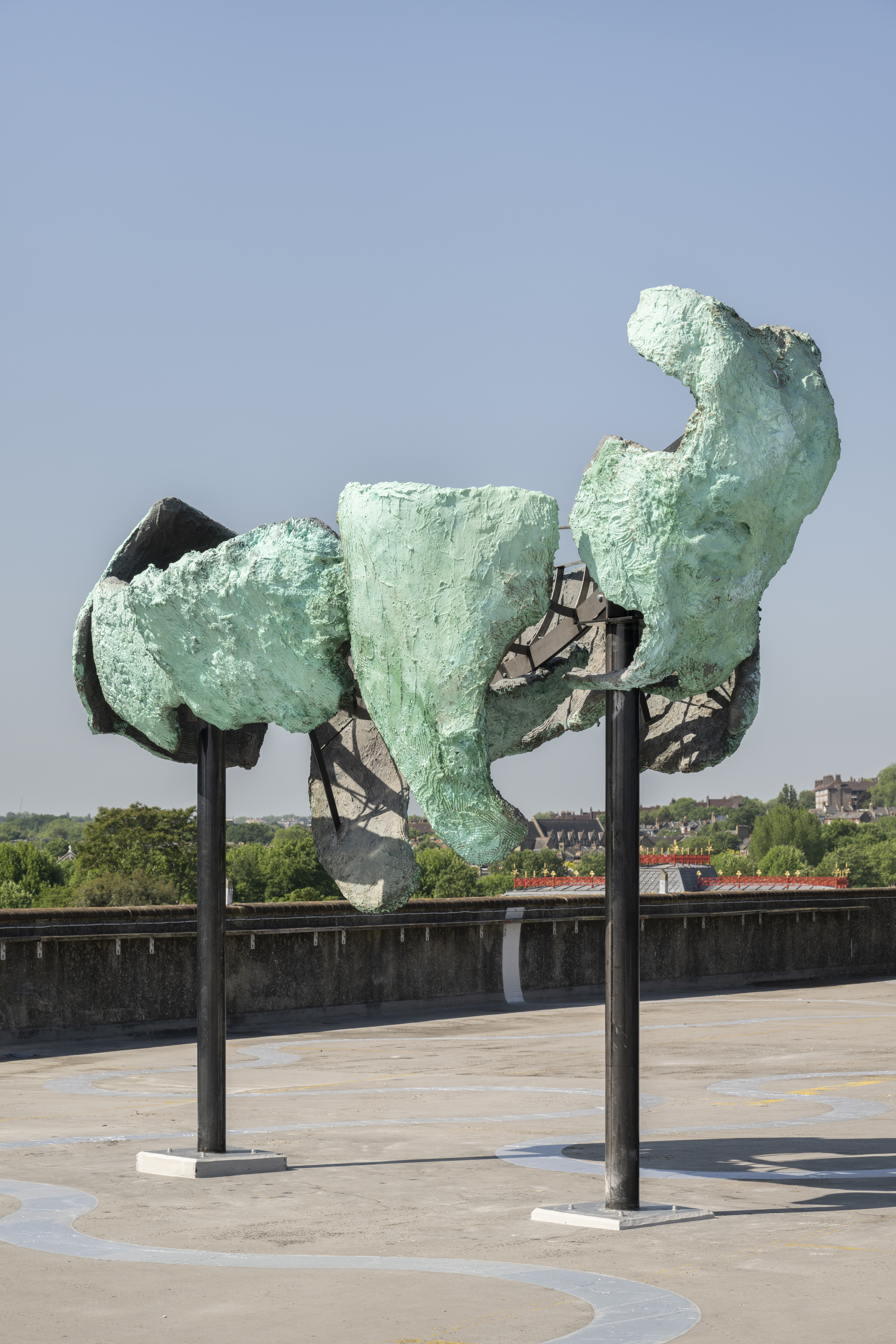Bold Tendencies
Images by Damian Griffiths
Exploring the cultural power and contested political histories of archeological ruins, Emii Alrai’s Guardian takes the form of a colossal fragmented relic inspired by the mythological icons of ancient civilisations. The formidable and abstracted sculpture, upheld by a museological armature of raw metal and finished in a vivid patina of teal and brown, draws on Alrai’s background as a museum registrar and her interest in the lives of objects. Both as vessels for nostalgia and romanticised visions of the past, as well as the vexed questions of empire, authenticity, memory and cultural preservation that surround archeological remains.
Drawing on her British-Iraqi heritage, the form and scale of Guardian makes particular reference to the Lamassu, an Assyrian protective deity and series of monumental statues found at the gates of ancient Babylon. Immense creatures with the body of a bull, wings of an eagle and the head of a human, the statues were first excavated in the 19th century by British archaeologist Sir Austen Henry Layard and later severed into pieces for transport to London. Several notable Lamassu remain on permanent display at the British Museum and are subject to ongoing debates over preservation, ownership, rights and repatriation.
Guardian – itself ruptured into a series of worn and ghostly fragments – speaks not only to this particular story of empire and cultural extraction, but to an inescapable, personal search for identity and place. Removed from its specificity, Alrai’s eroded icon is emblematic of our fascination – and at times familiarity – with an abstracted past that is only partially our own. Giving rise to conflicting feelings of fear, pride, ruin and majesty, Guardian explores the compelling, often disputed blank space of what lies between the material relics of our past and their cultural imagination, between personal memory and inherited symbols of home and belonging.





